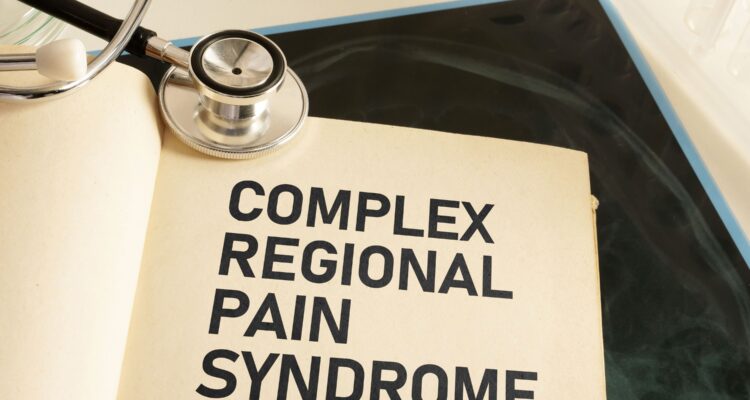At Bowman Law, our Colorado personal injury attorneys have seen firsthand how advanced vehicle technology can mean the difference between a close call and a catastrophic accident. Many modern vehicles are now equipped with Advanced Driver Assistance Systems (“ADAS”), consisting of a network of cameras, sensors, and computer processors to monitor road conditions and assist with reacting in real time.
These systems are not designed to replace drivers but to support them by detecting hazards, warning of risks, and even taking automatic action to prevent or minimize accidents. The technologies highlighted in this article have become standard across more vehicles. As discussed below, they are helping reduce injuries, fatalities, and property damage throughout Colorado.
Forward Collision Warning
Forward Collision Warning (FCW) systems use radar, lidar, or camera sensors to track the distance and relative speed between vehicles. When the system detects that a rear-end collision is likely, it alerts the driver through visual, auditory, or haptic warnings.
While FCW does not automatically apply the brakes, it gives drivers crucial reaction time to slow down or steer clear of danger. Research by the National Highway Traffic Safety Administration (NHTSA) shows that FCW systems significantly reduce rear-end crashes. When paired with automatic emergency braking, they can cut the rate of injury-related collisions by more than half.
Automatic Emergency Braking
Automatic Emergency Braking (AEB) takes collision prevention a step further. If a vehicle ahead stops suddenly and the driver does not respond in time, AEB automatically applies the brakes to prevent or mitigate a crash. Using forward-facing radar and cameras, AEB continuously calculates time-to-collision data. When an imminent impact is detected, the system applies partial or full braking. Some versions can also recognize pedestrians or cyclists—particularly valuable in urban driving environments. According to the Insurance Institute for Highway Safety (IIHS), vehicles equipped with AEB experience dramatically fewer rear-end crashes and lower claim rates. In short, AEB has become one of the most impactful safety innovations in decades.
Lane Departure Warning and Lane Keeping Assistance
Lane drift—often caused by distraction or fatigue—can lead to devastating head-on or sideswipe collisions. Lane Departure Warning (LDW) systems monitor lane markings using forward-facing cameras and alert drivers when the vehicle begins to unintentionally drift.
Lane Keeping Assistance (LKA) adds another layer of protection by gently steering the vehicle back toward the center of the lane. Some advanced systems, known as Lane Centering Assist, maintain continuous control to keep the car perfectly aligned within its lane.
While these systems rely on clearly visible road markings and may be less effective in snowy or poorly maintained conditions, they are proven to reduce accidents caused by inadvertent lane departures—particularly on highways and long commutes.
Blind Spot Monitoring
Every driver knows the anxiety of checking blind spots before changing lanes. Blind Spot Monitoring (BSM) systems eliminate much of that uncertainty. Using radar sensors embedded in the rear corners of the vehicle, these systems detect cars traveling in adjacent lanes that may not be visible in mirrors.
When a vehicle is detected in the blind zone, an indicator light illuminates on the corresponding side mirror. If the driver signals a lane change while another car is present, the system issues an audible warning—or, in advanced systems, gently corrects steering or applies braking to prevent the maneuver altogether.
BSM systems are especially effective in preventing high-speed lane-change collisions, which often cause severe injuries on Colorado’s busy highways.
Rear Automatic Braking
Low-speed backing accidents are more common than many realize, especially in crowded parking lots and residential driveways. Rear Automatic Braking (RAB) systems use cameras, radar, and ultrasonic sensors to detect obstacles behind a vehicle while reversing.
If the system predicts an imminent collision, it automatically applies the brakes, even if the driver does not react. RAB often works in conjunction with Rear Cross-Traffic Alert, which detects approaching vehicles from either side when backing out of a parking space.
According to the IIHS, vehicles equipped with RAB experience up to a 78-percent reduction in backing collisions compared to those without it—an enormous improvement in safety for pedestrians, pets, and property.
Adaptive Cruise Control
Traditional cruise control maintains a constant speed, but Adaptive Cruise Control (ACC) adds intelligence by adjusting speed automatically to maintain a safe following distance. Using radar and camera sensors, ACC monitors the traffic ahead and slows or accelerates as needed.
Some systems can bring the vehicle to a complete stop in heavy traffic and resume movement once the car in front moves—making long commutes or mountain-pass traffic much less stressful.
When paired with lane-centering technology, ACC provides a taste of semi-autonomous driving, helping reduce fatigue and prevent rear-end collisions caused by inattention or inconsistent spacing.
How These Systems Work Together
Modern vehicles integrate multiple safety systems through a process known as sensor fusion. Radar, cameras, and lidar sensors work together to create a comprehensive picture of the vehicle’s surroundings. When combined, features such as forward collision warning, automatic braking, and lane assistance can communicate and respond in real time.
For example, a vehicle may detect a sudden stop ahead, alert the driver, tighten seatbelts, and apply brakes—all in a split second. This layered defense approach dramatically increases the chance of avoiding or mitigating a collision, especially when drivers fail to respond quickly.
Challenges and Limitations
While ADAS technologies have transformed vehicle safety, they are not flawless. Heavy rain, snow, fog, or road debris can impair sensor function. Lane departure systems may fail when markings are faded or covered, and automatic braking may not detect every type of obstacle.
False alarms can also frustrate drivers, leading some to disable systems that could otherwise save lives. Over-reliance on automation poses another risk—drivers must remain alert and ready to take control at any moment.
From a legal perspective, as accident-avoidance systems become more autonomous, new questions arise about liability. When a semi-automated system contributes to a crash, determining whether fault lies with the driver, manufacturer, or software can be complex. These are issues the legal community—and Bowman Law—continues to monitor closely.
The Future of Accident Avoidance
The next generation of crash-prevention systems will be even smarter. Vehicle-to-vehicle (V2V) and vehicle-to-infrastructure (V2I) communication will allow cars to share data about road hazards, weather, and traffic in real time. Artificial intelligence will enable predictive modeling that recognizes risky driving behavior before it causes a crash.
Future vehicles will integrate more robust sensor fusion, adaptive learning, and over-the-air updates to continually improve safety performance. Ultimately, these advancements are steering us toward a future where serious collisions become increasingly rare.
Conclusion
At Bowman Law, we believe technology and accountability must go hand in hand. Accident-avoidance systems are saving lives and reshaping the future of driving, but they also raise important questions about responsibility and safety standards.
If you or a loved one has been injured in a motor-vehicle collision—even one involving a driver using advanced safety technology—our team can help. We combine deep legal experience with an understanding of vehicle safety systems to hold negligent drivers and corporations accountable.
Bowman Law remains committed to promoting safer roads and ensuring that those harmed by negligence receive the justice they deserve.



 Return to All News & Resources
Return to All News & Resources


